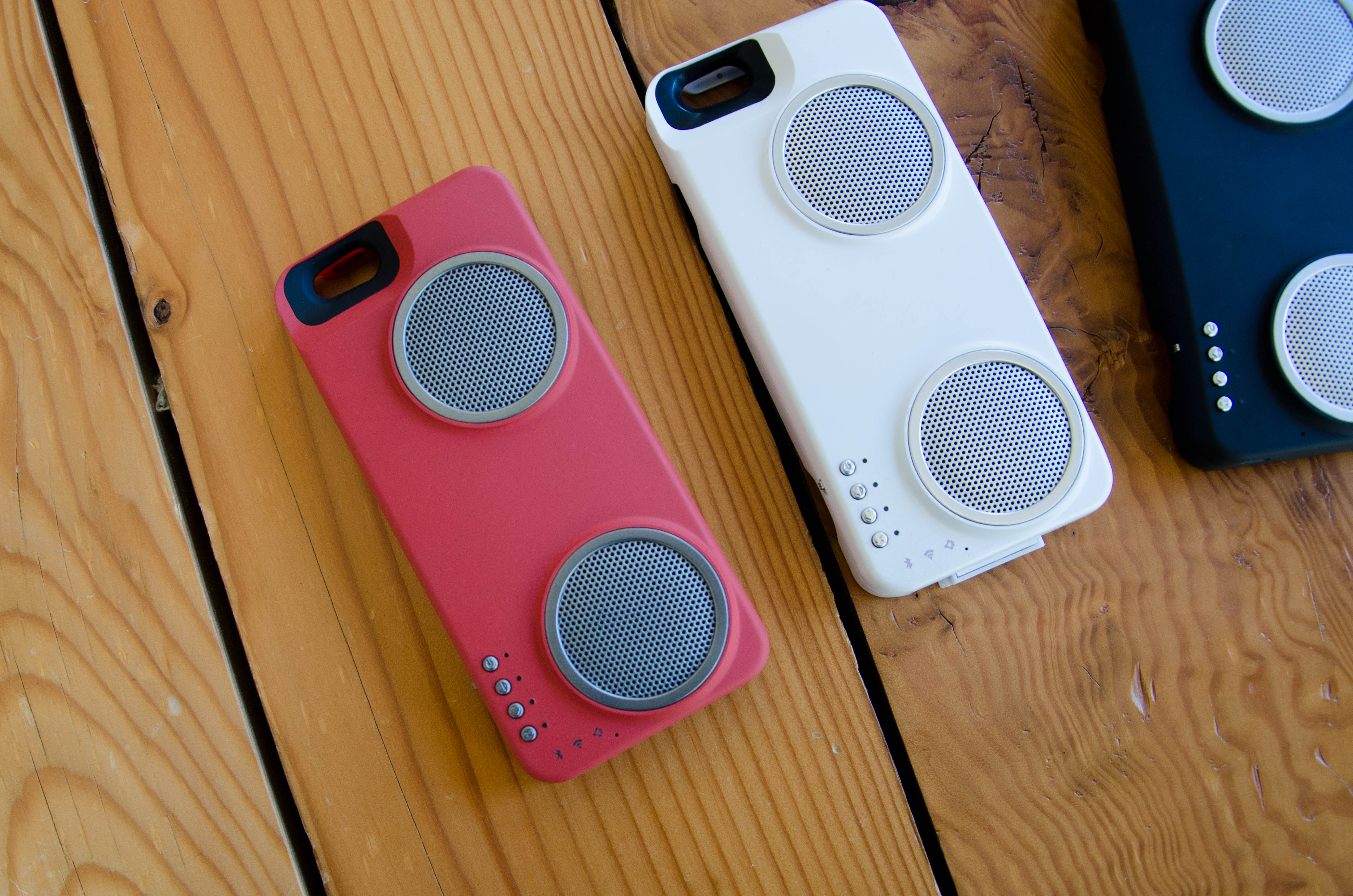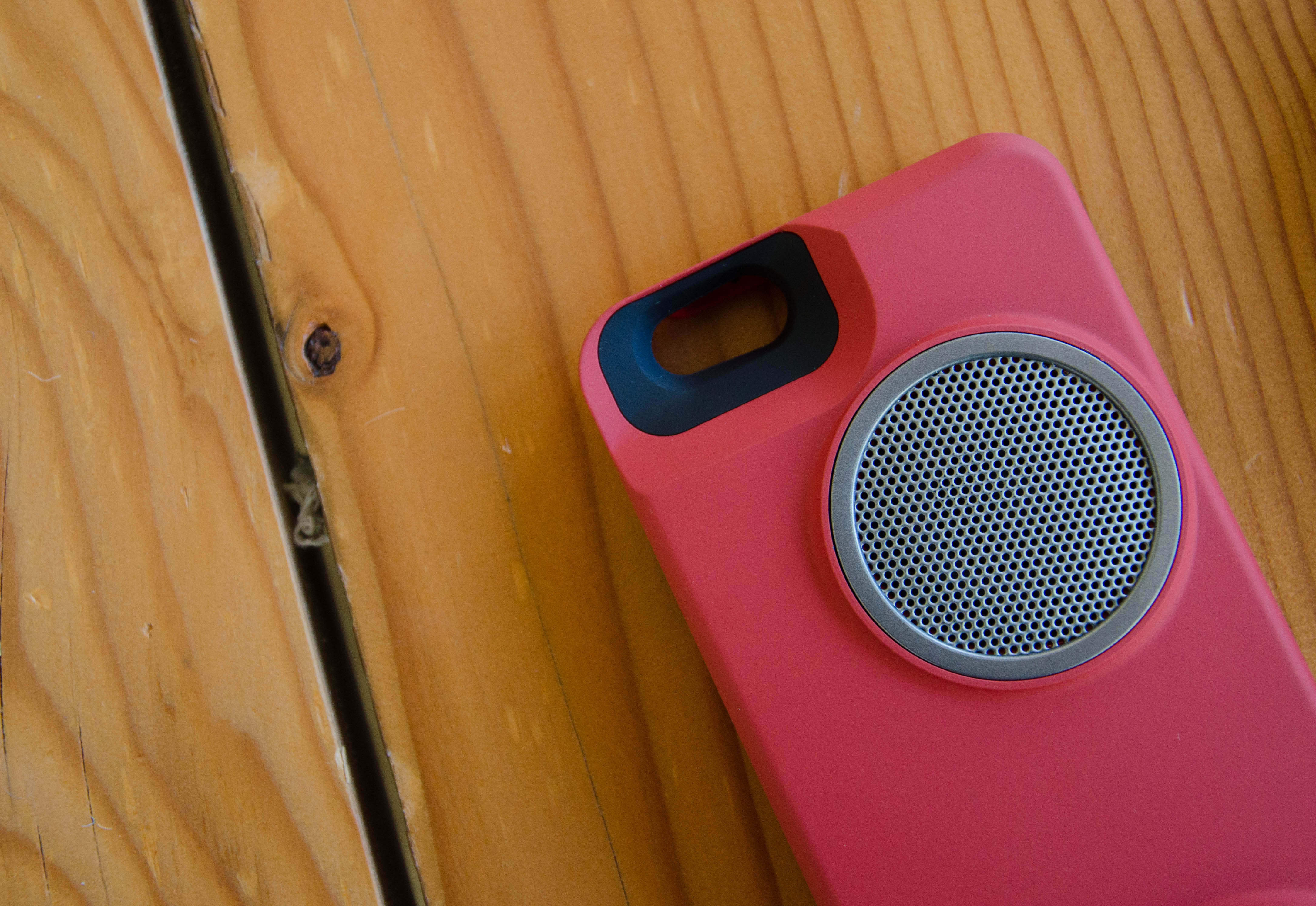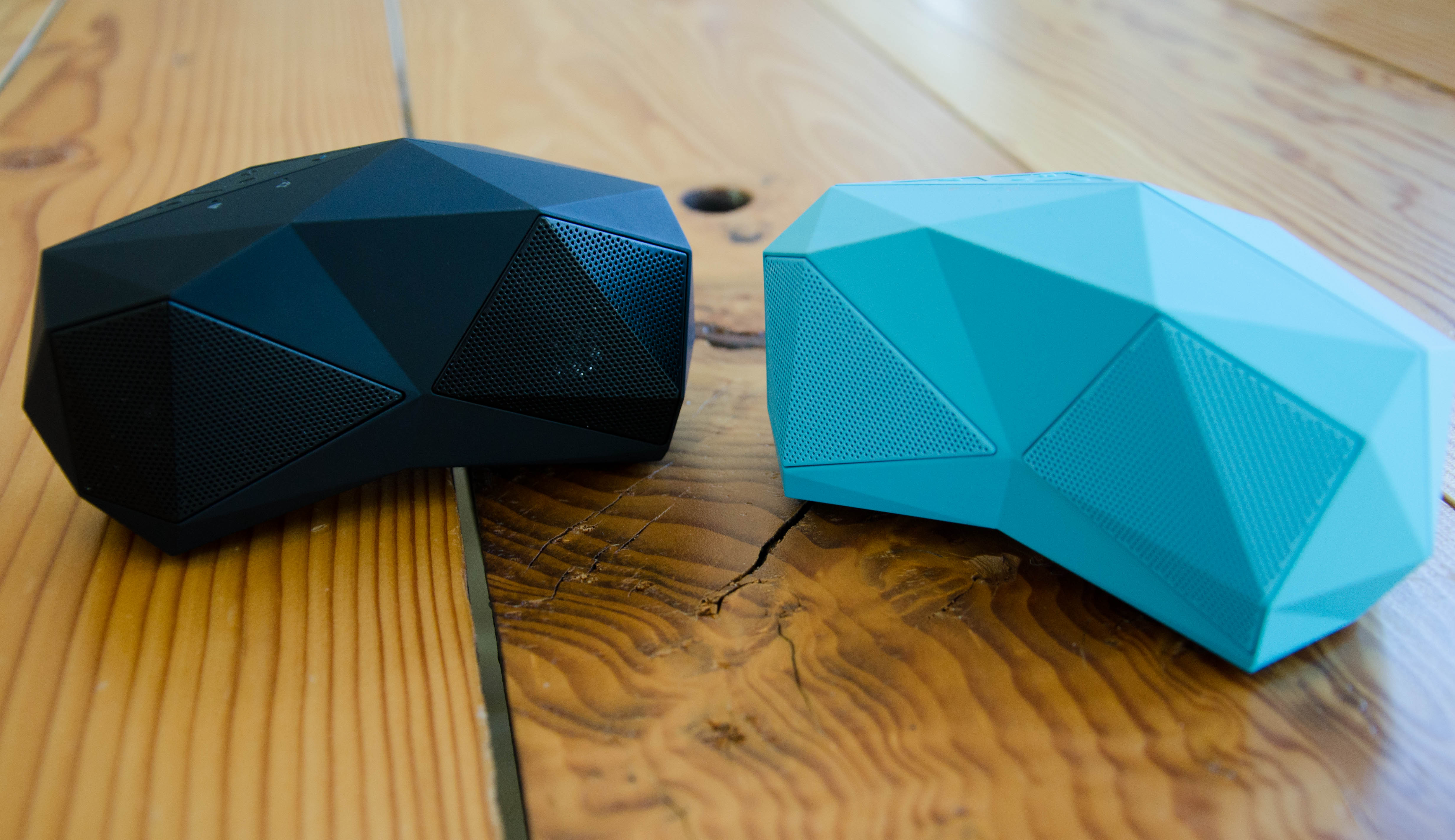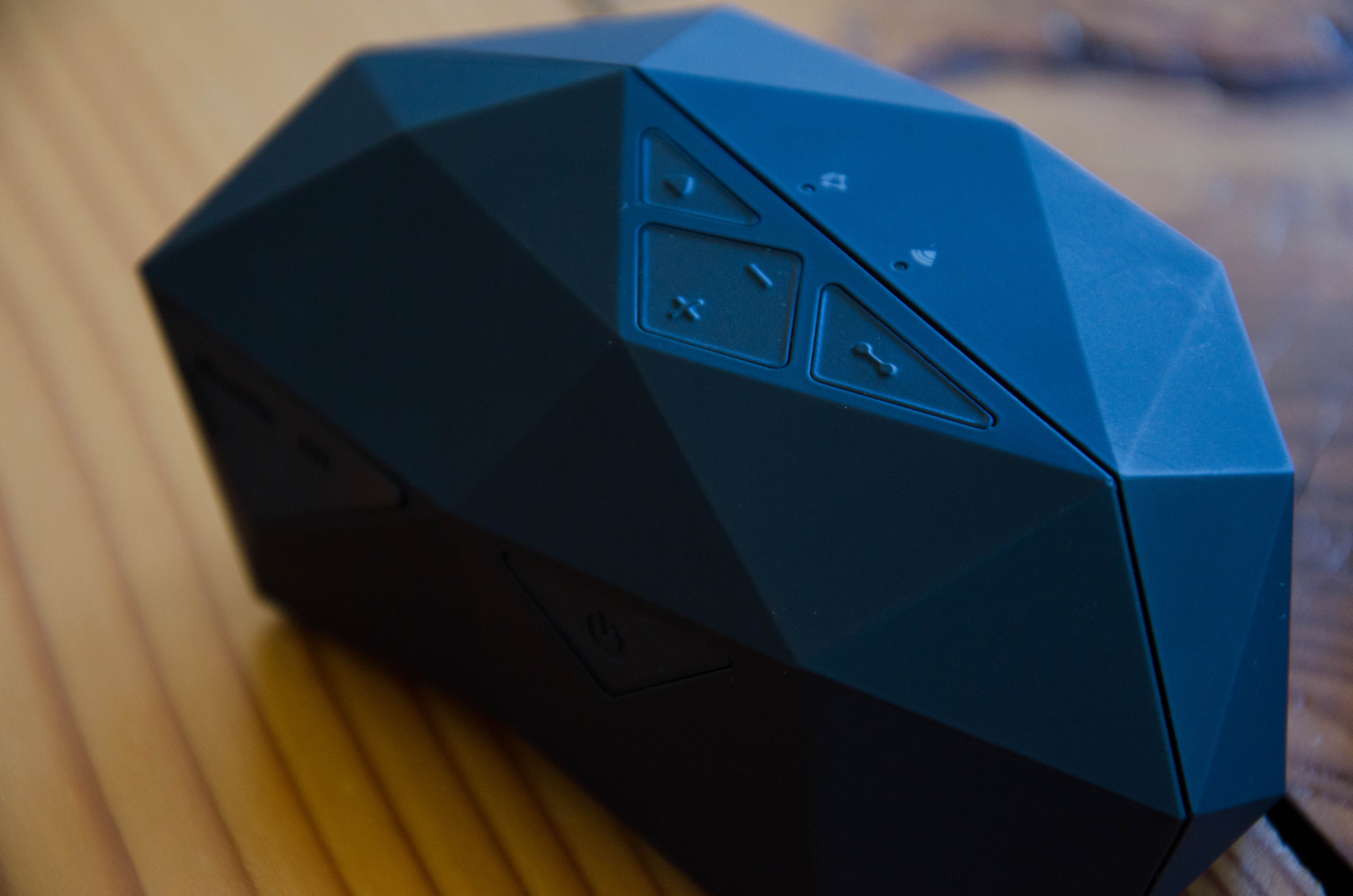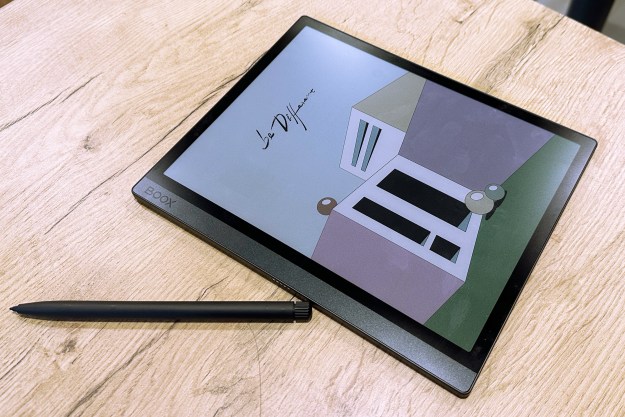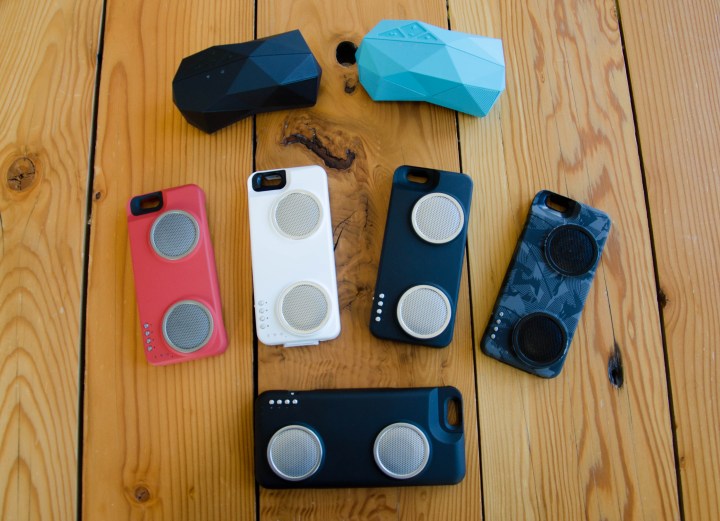
You may remember the Peri Duo, which made some noise on Indiegogo around a year ago. The company behind the device successfully funded its Indiegogo campaign in February 2015, and now — after a design refresh — it’s finally about to ship.
To bring you up to speed, the Duo is an iPhone case that doubles as a high-quality speaker and a power bank. The company began working hard to bring the product to consumers soon after the Indiegogo campaign ended, outfiting the device with a few improvements— namely a larger 2,900mAh battery, a sleeker design, and version for the iPhone 6 Plus.
To charge your iPhone 6, 6S, or a larger counterpart, you simply flip a switch on the side of the case. The bulky case also features four other buttons that allow you to switch through audio modes, manage the volume, and access Quick Play. Hitting the latter brings you straight to your favorite cloud-streaming service, such as Spotify or Google Play Music — and it gets really loud.
You can also connect the case with up to 64 other Duos via Quick Link, which is a little ridiculous, but hey, that’ll be one hell of a party.
Most speakers transmit audio via Bluetooth, which doesn’t offer the best quality. Which is why the device also features an option to stream music via Wi-Fi, allowing you to play higher-resolution audio files. The case can also be used to multicast music with multiple Duo cases using peer-to-peer Wi-Fi connectivity. The case isn’t just for playing music though — any audio playing on your iPhone is transmitted to the case as long as it is paired via Wi-Fi or Bluetooth.
Peri is also offering a look at another device at CES 2016, aka the Stone, a portable multi-speaker system. The water-resistant device is practically the Duo as it has offers the same features like Quick Play and Quick Link, all with high-quality audio. Obviously, it’s intended to be portable, but not so portable that you’d want it stuck to your phone all the time like the Duo. Thankfully, because it just requires you to connect via Bluetooth or Wi-Fi, it’ll work with almost any smartphone.
The Stone will provide around four to six hours of playback, depending on volume, before you’ll have to charge it again.
“People are using their phones primarily for media consumption,” said Michael Hsu, chief financial officer at Peri. “We think there are a lot of demographics that are going to love this just for the basic docked audio playing and charging. And that’s the other thing for gaming and media consumption — it drains your battery. You’re going to kill your battery faster than anything by watching media on the device, and that’s where I think this is going to be a huge benefit for people — you get two in one.”
Peri is looking to ship the Duo toward the end of January, but you can pre-order it now for $190. The iPhone 6 Plus version will available in February. The Stone will see a Kickstarter launch at the end of January when the Duo begins to ship, and will also retail for $190. The Stone will be available in black, white, and ice blue.
